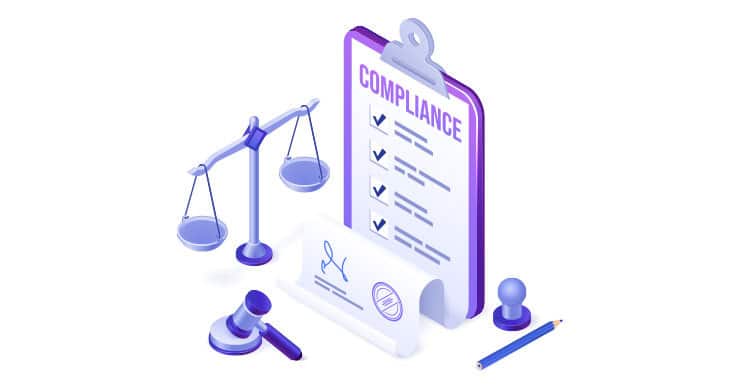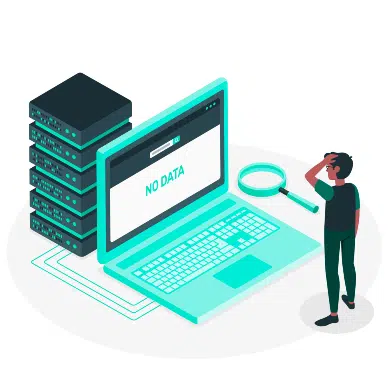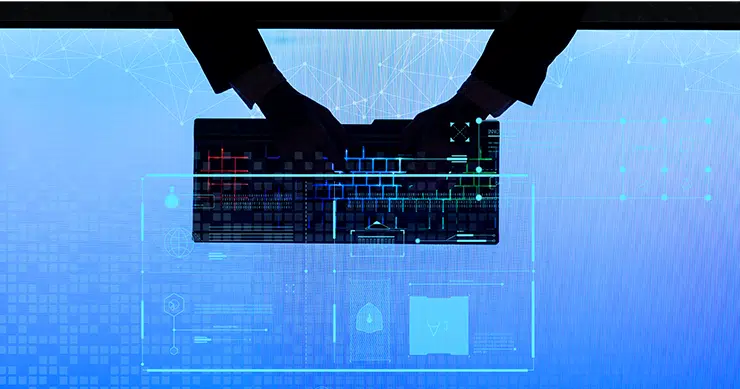Compliance Audit Woes
Compliance audits are STRESSFUL. IT teams work overtime and overnight to collect evidence of compliance with standards. Passing the audit involves showing documentation indicating which policies and controls are in place, how they’re managed, and ACLs (access control lists) across many applications and devices.
The nature of a compliance audit varies based on whether a company is public or private, the type of data it handles, and what sort of industrial category it falls into. For instance, a Sarbanes-Oxley (SOX) Act compliance audit would have to demonstrate data integrity and that a data recovery plan is in place. Healthcare providers are subject to Health Insurance Portability and Accountability Act laws and regulations to protect patient privacy. Fintech and e-commerce companies that transmit credit card information are subject to Payment Card Industry Data Security Standard requirements. In all cases, organizations must be able to prove compliance by producing an audit trail generated with data from event logs as well as internal audits.
It’s only getting more stressful. New regulations such as the GDPR require more than just a point-in-time snapshot of the state of security. They require evidence of ongoing control monitoring and cloud assessment. Currently, the US Department of Defense is rolling out a new cybersecurity program focused on ensuring continuous compliance monitoring for firms in the defense supply chain. Adhering to this new era of standards that require constant compliance monitoring demands a tremendous investment of capital and human resources.

Regulatory Fatigue
Today, most enterprises cooperate with the demands of multiple regulations and security standards. The consequence of the recent deluge of regulations and standards is “regulatory fatigue”, where companies face a tangle of tiresome regulations that ultimately inhibit their efficiency and productivity.
For this reason, automated security compliance solutions are a win-win situation that removes the need for employees to spend countless hours gathering evidence, and facilitate rigorous compliance requirements. An integrated, continuous approach helps achieve process efficiency and a cost-effective method of operation by eliminating the huge overhead costs of hiring or contracting a dedicated compliance team. A proactive, continuous compliance approach simplifies and totally revamps the compliance process.
What is Continuous Compliance?
Continuous compliance is the implementation of a process that continuously monitors IT assets to verify that they meet regulatory security requirements. With continuous compliance, you can scan for network threats, and be notified immediately if an IT asset is non-compliant. Maintaining a tight security posture in the face of regulatory standards becomes doable with continuous compliance.
Continuous compliance aims to take IT teams away from responding reactively to audit requests to being proactively prepared for future threats and compliance audit reporting requirements. Continuous compliance allows a business to confidently respond to security questionnaires, annual reviews, ad-hoc investor requests, and consumer-based scrutiny of privacy policies.
It is interesting to note that when an enterprise reacts prudently to unplanned events, it will generally incur costs in proportion to the impact of the unforeseen events. Conversely, when an enterprise proactively plans strategies and continuously refines its operating model, this creates a driver for business value and profitability despite, and sometimes, due to the imposed threats.
Start Getting Value With
Centraleyes for Free
See for yourself how the Centraleyes platform exceeds anything an old GRC
system does and eliminates the need for manual processes and spreadsheets
to give you immediate value and run a full risk assessment in less than 30 days
How To Achieve Continuous Compliance?
- Set Security and Compliance Goals
Start with defining security and compliance objectives based on compliance standards. These standards can be at the state, federal, or international levels. They can also be internal policies that a company sets for itself. While compliance standards vary by organization and industry, learning the details of your particular frameworks will help you create a holistic plan of risk management and compliance.
Strategic foresight is at the foundation of continuous compliance. If you don’t understand which requirements need to be executed, and what the status and maturity level of those requirements are, you are groping in the dark with no chance of success.
- Build a Framework Infrastructure
Building a solid internal controls framework is an excellent first step to implementing continuous compliance. This is especially important in a hybrid on-site and cloud environment that is so commonly found nowadays. The NIST Privacy Framework is a free, unregulated tool that helps companies define their privacy goals, identify where risks exist and what technologies to apply to ensure compliance with other regulations.
Compliance Crosswalks
Once the framework is in place, companies can map security controls to several frameworks in a single go. This concept is known as a crosswalk. Building a crosswalk allows you to map your controls to multiple frameworks or regulations at once and reduce or eliminate redundant testing. Each internal control is cross-referenced to different regulations that have a related requirement. Testing the control with one framework satisfies all mapped frameworks and regulations, and documentation only needs to be supplied once. With an effective crosswalk, you can efficiently reduce the regulatory fatigue that is so typical during auditing.
- Automation
The core of continuous compliance is automation. Continual compliance solutions consolidate all compliance processes under one control center. Running automatically, a continuous compliance solution provides a toolset for status monitoring and audits, security self-assessments, and risk analysis. Capitalizing on software or cloud-based tools to automate compliance monitoring and reporting helps save time and create a more comprehensive workflow around the process of compliance, rather than leaving it to individuals to manually check and update systems.
There are lots of sophisticated continuous compliance tools that can proactively assess your risk and compliance environment to spot developing gaps in real-time, giving you enough time to respond before the threat is imminent and the audit is conducted.
Pros and Cons of Continuous Compliance
Pros
- Fast and Frequent Security checks
Manual testing of system security is usually categorized as a “secondary control”, only done periodically as it is time-consuming to manually review and respond to vulnerabilities and gaps. Continuous compliance places security health checks as a “primary control” process by maintaining the compliance state at all times.
- Reduces Human Error
Omissions and errors are common when teams manually process large amounts of data, typically in spreadsheets. Continuous compliance removes the burden of the entire compliance process from IT teams and reduces the risk that oversight will lead to a compliance error.
- Achieves In-depth Visibility
The visibility of an automated compliance solution eliminates the scramble to dig for information to support an audit. It provides complete visibility into the security state of servers, compliance policies, as well as any regulatory changes.
- Compliant By Design
For DevSecOps, continuous compliance means building applications with compliance and security policies from the birth of the application’s development lifecycle. A continuous compliance process ensures that application development is in sync with compliance requirements at all stages.
Cons
- Rising Costs
The cost of sustaining automated regulatory compliance is astronomical, and as new regulations proliferate, so does the price of the solutions. Skyrocketing prices put tremendous pressure on companies, especially SMBs. The verdict is out whether the benefits of continuous compliance solutions outweigh their costs for small businesses where manual compliance assessments and audit preparation may well be a more feasible option. There are compliance management tools for the SMB that can be cost-effective so do your research!
- False Confidence
Being compliant doesn’t mean you’ve achieved full cyber maturity. Checking off compliance requirements, implementing strong controls, and passing an audit are great signs of a robust compliance process, but it’s not the end of the journey. Automation and continuous monitoring make compliance efforts more efficient and sometimes lead to a false feeling of confidence. The cyber landscape is constantly changing and at the end of the day, human oversight is still necessary to ensure that new and existing regulations and trends are being addressed.
Centraleyes Compliance Solution
If you’re looking for a place to start with continuous compliance, you’ve come to the right address. Privacy laws and regulatory standards are here to stay, and businesses that get ahead now will be in a better position as more standards are added to the compliance scene. Centraleyes provides one of the world’s best scalable compliance monitoring platforms that streamlines data collection, automates compliance framework crosswalks, and stays up-to-date with tens of industry and regulatory frameworks.
Don’t just take our word for it. Sign up for a free demo, and we’ll show you how Centraleyes can simplify your compliance management process.
Start Getting Value With
Centraleyes for Free
See for yourself how the Centraleyes platform exceeds anything an old GRC
system does and eliminates the need for manual processes and spreadsheets
to give you immediate value and run a full risk assessment in less than 30 days





